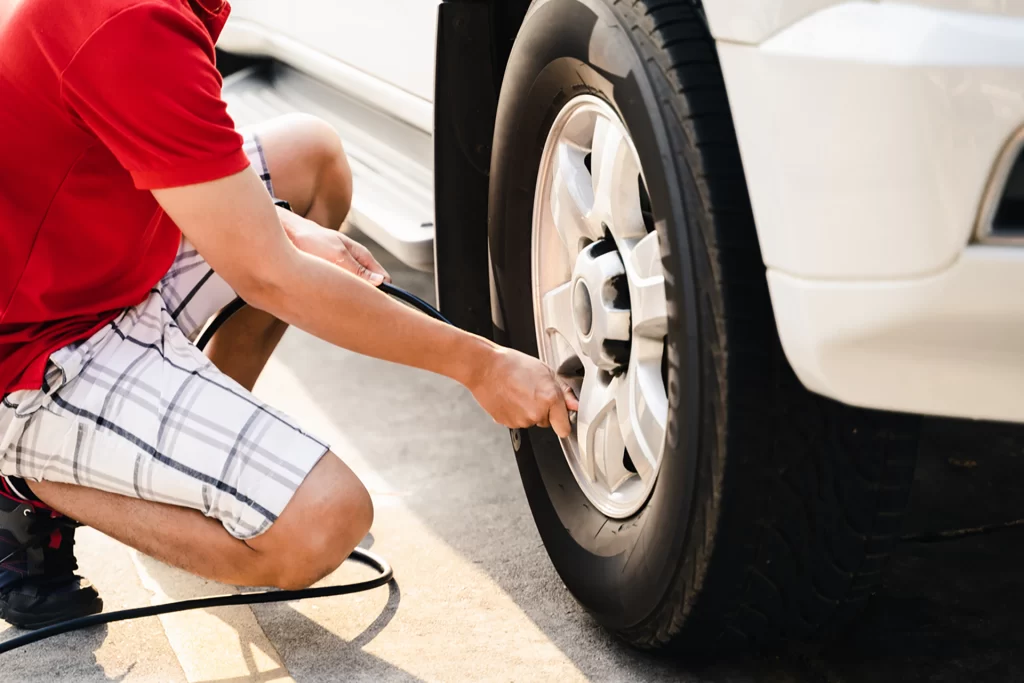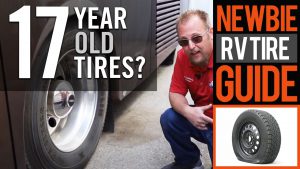Maintaining proper tire pressure is essential for RV safety, but do you know how to check it correctly? Incorrect pressure can increase the risk of accidents and reduce your vehicle’s performance. Fortunately, checking tire pressure is straightforward if you follow these steps.
Why RV Tire Pressure Matters

Tire pressure is measured in pounds per square inch (PSI), and maintaining the right PSI ensures a smoother ride, better fuel efficiency, and safer handling. RV tires typically require higher pressure than regular passenger vehicles:
- Class C RVs: 75 to 80 PSI
- Class A RVs: 90 to 100 PSI
Your home air compressor may not be powerful enough to handle RV tires. In fact, it’s possible to accidentally reduce air pressure when using improper tools, compromising safety.
Pressure fluctuates over time due to factors like weather changes. If your tires require frequent refills, it may indicate holes, cracks, or faulty valve stems. Regular maintenance is key to catching these issues early.
Handling Hubcaps
First, check whether your RV has hubcaps, as some do not. If your hubcaps are secured with nuts, you must remove them first. Be careful—some decorative nuts may appear functional but are only cosmetic. Prying them off improperly could damage the hubcap.
Instead of using a screwdriver, opt for a hubcap removal tool or a plastic pry bar to avoid scratches. Once the tire is filled, you can replace the hubcap by gently tapping it into place with a rubber mallet. If your hubcap had nuts, reattach them securely.
Steps to Check RV Tire Pressure
Checking tire pressure regularly, especially before long trips, helps prevent problems. Follow these steps:
- Check When Cold: Take measurements when the tires are cold, either before driving or at least three hours after parking.
- Remove the Valve Cap: Unscrew the small cap covering the valve stem.
- Use a Pressure Gauge: Attach the pressure gauge to the valve stem. Hold it in place for a few moments until the reading stabilizes.
- Review the Pressure: Compare the reading to the manufacturer’s recommendation. If the PSI is too low, add air.
- Monitor After Adjustments: Recheck pressure over the next few days. A recurring drop may indicate a slow leak or other issue, requiring further inspection.
When to Replace Tires

If you consistently find that tire pressure drops or the tread is wearing thin, it may be time to replace your tires. However, not all situations call for replacement. Technicians can sometimes repair minor leaks or damaged valve stems instead. See our post on RV tire replacement.
Key Facts About RV Tire Pressure
Having the correct tire pressure extends the life of your tires, ensures better handling, and reduces safety risks. To find the recommended pressure for your RV, check one of these three sources:
- Driver’s Side Door Jamb: Most RVs have a sticker here, much like standard cars, showing recommended PSI.
- Owner’s Manual: This provides a reference for your specific RV model.
- Tire Sidewall: Each tire also lists recommended PSI, although this may not account for your specific load.
The door jamb sticker is often the most reliable, as it confirms that the correct tires are installed for your RV.
Tire Load and Pressure Distribution
Tire pressure isn’t just about individual tires—it also depends on tire load. This load refers to the weight supported by each wheel position. For safe driving:
- All tires on the same axle must have the same PSI.
- Base tire pressure on the heaviest side of the RV.
- Don’t assume weight is evenly distributed. Measure each wheel position individually.
Proper weight distribution ensures consistent performance and extends tire life. Misjudging the load can lead to under- or over-inflated tires, which can affect handling and increase wear.
Valve Stem Extensions and Multi-Wheel Axles
RVs with more than two wheels per axle often require valve stem extensions for easier access. Without these, it can be difficult to check inner tires accurately. However, avoid using metal valve stem extensions on rubber stems, as they can cause leaks or damage over time. Opt for flexible rubber extensions instead.
Checking for Air Leaks
If your tire pressure keeps dropping, a leak is the likely cause. To identify the source, follow these steps:
- Prepare a Soap Solution: Mix water and a few drops of dish soap in a spray bottle.
- Spray the Tire: Apply the solution around the bead (where the tire meets the rim) and valve stem.
- Look for Bubbles: Bubbles indicate escaping air, pinpointing the leak’s location.
Leaks near the bead or valve stem may be repairable, but more serious damage might require tire replacement.
Tire Pressure Monitoring System (TPMS)
Most modern RVs come equipped with a Tire Pressure Monitoring System (TPMS), which provides real-time PSI readings and alerts if pressure drops. However, sensors can malfunction, leading to inaccurate readings. If your TPMS is frequently giving false alerts, bring your RV in for inspection and calibration.
Need Professional Help?
If you’re unsure about tire maintenance or experience recurring issues, contact Leisure Coachworks for professional service. Regularly checking and maintaining your tire pressure ensures a smoother, safer trip. Make it part of your pre-trip routine to avoid surprises on the road.



